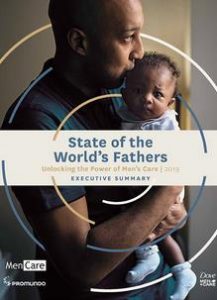
A new capitalism analysis?
Yes, new capitalism analyses do appear. Although fairly rarely, maybe. It is not just the old stuff on how capitalism is bad – or good. Not just the old black and white treatment.
Two fairly recent examples include Richard Wilkinson and Kate Pickett: The Spirit Level (2010), and Thomas Pikketty: Capital in the Twenty-First Century (2014). Both works created a lot of scientific debate. Instead of condemning or praising capitalism in general terms, these pioneer studies went into the empirical terrain – what actually happens, in capitalist economy, viewed from our own time.
 Both books have the merit of a clear empirical hypothesis, and a theory updated around that central fact. In the case of The Spirit Level, the central empirical fact or pattern is the build-up of psychological and health costs related to capitalism, or at least, some very hardline or competetive forms of capitalism. In essence, there are good psychological and health reasons to avoid too much or too hard capitalism. The fallouts and dysfunctions are bad not just for those who fall out of the system, but for the system also, including the upper class.
Both books have the merit of a clear empirical hypothesis, and a theory updated around that central fact. In the case of The Spirit Level, the central empirical fact or pattern is the build-up of psychological and health costs related to capitalism, or at least, some very hardline or competetive forms of capitalism. In essence, there are good psychological and health reasons to avoid too much or too hard capitalism. The fallouts and dysfunctions are bad not just for those who fall out of the system, but for the system also, including the upper class.
Pikketty’s argument is more detail-focused. He goes into one highly significant “detail”, the percent of the total product value taken out by the owners of the production process. He finds a clear historical tendency – the share given to owners is rising, and the rise is notable in the period from the 1980s-today. From the conclusion:
“A market economy left to itself … contains powerful forces of divergence …… the principal destabilizing force has to do with the fact that the private rate of return on capital, r, can be significantly higher for long periods of time than the rate of growth of income and output, g. The inequality r > g implies that the wealth accumulated in the past grows more rapidly than output and wages. (…) The entrepeneur inevitably tends to become a rentier, more and more dominant over those who own nothing but their labor ( p 571).
There are different ways to interpret this, but there seems to be little doubt that the new findings give a fairly historically correct picture. Pikketty’s “facts” are even more broadly acknowledged than those of Wilson and Pickett.
None of these works highlight gender discrimination as such, although it is mentioned in The Spirit Level.
Gender equality is assumed to be a fairly peripheral factor, which is a mistake, in my judgement of the state of the research, including my own studies.
Instead, the main discrimination factor is social class or status – rather than gender, ethnicity, or sexuality.
The empirical message seems strong, but I would like it to be tested for control variables like gender equality.
The main message of Wilkinson and Pickett, and of Piketty, is that more social class divides will create more problems. Although starting from different disciplines and problem formulations, the two projects converge in their analysis – which is significant, I think.
Beyond these empirically oriented works, I have a lot of “imaginative” books on capitalism, in the bookshelf by my desk. Like; “How will capitalism end” by Wolfgang Streeck. Hardt and Negri: “Empire”, and books on the follow up debate. In my bookshelf, Steven Lukes: Power: A Radical View, sits besides Judith Butler: Undoing Gender. Eric Anderson’s Inclusive Masculinity is not far away.
Why? The subject is cross-disciplinary. What is called capitalism in one book may be called masculinity in another.
References
Piketty, David 2014: Capital in the Twenty-First Century. The Belknap Press of Harvard University Press, Cambridge Massachusetts
Wilkinson, Richard; Pickett, Kate 2010: The spirit level. Why greater equality makes societies stronger. Bloomsbury Press, New York

En internasjonal undersøkelse (IPSOS) tyder på at kjønnslikestilling er det minst kjente området blant 16 omåder i forhold til FNs bærekraftsmål, selv om det er presentert ganske høyt på listen, som mål nr 5.
“A new Ipsos survey finds that at a global level, three out of four adults (74%) have at least some awareness of the United Nations’ Sustainable Development Goals (SDGs). These goals, laid out by world leaders in 2015, were 17 benchmarks set in order to end poverty, fight inequality, and stop climate change around the world. This survey asked more than 19,000 adults from 28 countries about their awareness and opinions of 16 of the 17 SDGs”
«Ingen sult» var det mest kjente av FNs bærekraftsmål, 85 prosent, fulgt av «rent vann», 84 prosent, og «ren energi» med 83 prosent. Etter en rekke med nokså håndfaste mål der raten for kjenskap varierer fra 85 til 79 prosent, kom de to sosiale målene om redusert sosial ulikhet, som en egen pulje lenger bak. Dvs «redusert ulikhet» 76 prosent, og «kjønnslikestilling» 74 prosent.
Cf
https://www.ipsos.com/en/awareness-united-nations-sustainable-development-goals-highest-emerging-countries
https://www.weforum.org/press/2019/09/global-survey-shows-74-are-aware-of-the-sustainable-development-goals

Hippie music – not quite dead?
Checking out Beautify Junkyards: The invisible world of Beautify Junkyards. Ghost box records.
This is a Portuguese band, recorded in Lisbon. I came across it, searching for good new music, listened to it on Tidal, and then decided to buy the LP. Very glad I did.
First thing – the title “hippie music” is partly wrong. “Mystic music” is maybe a better word. This is a new kind of music, whatever its roots.
Yet it does have a lot of hippie and 1960s youth movement references. The music style is much like the band The United States of America, on their first album, the song Love letter for a dead Che. Che Guevara, that is. Women voices lamenting.
The band cites the poet William Butler Keats, much in the hippie fashion, if there is a “dim kingdom” beyond the ills of this earth, why not grab for it.. “There is more love there, than upon the earth”.
Someone named “major Tom” has been brought in, to produce this, and it has been done in intricate and engaging ways. Often, I feel, the music is best when it gets down to its Portuguese or even Brazilian roots, or moves in that direction. That’s when things really start to swing.
All in all a very good LP, recommended.

You might think a group named “Gentle Giant” was about masculinity. Maybe it was. But this group was mainly about “weird”, as in “far out”, beyond any of the confines of their context, the music scene in the UK around 1970. Where, suddenly, everyone and his son in law were competing, how to be “progressive”. How to push “prog” music along.
Gentle Giant were masters of this art. Pushing prog rock beyond the borders of convention, acceptance and imagination of the day, with very experimental albums – resulting in a “niche” limited following. Later, their merits have been rediscovered.
Now, excerpts of their first three albums have been re-mixed and reissued by Steven Wilson (Three piece suite). I bought this double LP. Cover reproduced below.
I have compared the original albums to the Wilson remix. I like the originals better, on most accounts. There, the production goes further into the “weird” territorry, along with the music. The ambience, especially, is more striking. But this is probably not so much due to Wilson, rather it is due to the state of the tapes he worked with. The tape recordings on my original LPs sound more fresh, with more treble energy. I bet that the tapes that Wilson worked with – after years of storage – were somewhat reduced in the high treble. This is what happens to tapes over time.
I find plusses and minuses across the line. If I want Gentle Giant to sound “modern and normal”, not so hard to accept, I turn on the Wilson mix. If I want them in all their weirdness, disregarding some glaring and badly composed production, I go back to the originals. If I had to choose one, the originals win out. But it is nice to have both.

Washington Post cites my research here:
https://www.stk.uio.no/om/aktuelt/i-media/2019/why-the-patriarchy-is-killing-men.html

A feminist pioneer belts it out:
Grace Slick: Manhole (1974)
Front side of the cover of my original LP (on Grunt label)
Grace Slick was an icon of the youth revolution in the late 1960s.
Was she only a pretty face? No.
If you want a direct ‘time window’ into the end of the hippie era, recorded in 1974, try this LP.
A very under-appreciated album.
Cover back side
“On Manhole, the music is wonderfully dense, macabre, exhilarating, and totally out there. This is a great portion of music from the lead singer of one of America’s great music groups. ” Joe Viglione, Allmusic cf https://www.allmusic.com/album/manhole-mw0000015080
When I listen now, 2019, I still think – like I did when first hearing the album in the 1970s – that Slick often leans too far towards “power” singing, becoming insistent, belting or shouting out her message. When she moderates her voice, things go better.
And yes, now as before, I think the arrangements and melodies sometimes become pompous.
Even so, this is a great album.
The feminist and progressive message is clear. For example, Slick is not singing about some up-above lover, willing to let his charms, like other female artists of the day, including Joni Mitchell (“the big man arrives”..). There is more fire-power here. She sings with the men she loves, instead. Remarkably, her duets with Paul Kantner are among the best material – and the Kantner songs are among the best on the LP.
Manhole has been under-appreciated and downgraded for too long. Even in a recent review, the tendency remains (see e g http://www.thevinyldistrict.com/storefront/2015/07/graded-on-a-curve-grace-slick-manhole/). The reviewer says that when she innovates, it is “obscure”. When she doesn’t, it is stale. Damned if you do; damned if you don’t.
I think she ran circles around most other female singers of her day – they often sound stale and meek, compared to this. Do I like the sound of her singing? I am mixed. Sometimes no. It is too much. Too masculine, even. But is it new? Yes. Is it assertive? Yes. Does it carry a message? Yes. Does it spell artistic freedom? Yes.
Women of the revolution: Janis Joplin and Grace Slick at Woodstock 1969
Manhole needs to be understood in context. It was made at the end of the Jefferson Airplane period, before the band changed into the more commercial and less progressive Jefferson Starship, in the mid-70ies.
Jon Viglione at All music guide describes it fairly well:
“Manhole was the last of the experimental Jefferson Airplane, and Grace Slick’s first official solo album. While Bark and Long John Silver, the final stages of the original Airplane, displayed the excessive psychedelic nature of the musicians within the confines of their group format, Blows Against the Empire, Sunfighter, and Baron Von Tollbooth and the Chrome Nun allowed for total artistic expression. Manhole concluded this phase with 1974’s other release, the Jefferson Starship’s Dragonfly.”
Bark and Long John Silver were rather unsuccessful attempts of the Airplane – after a string of successful innovative albums in the late 60ies, including After bathing at Baxter’s, Crown of creation, and Volunteers. The band realized this, and attempted new formats and groupings from the members of the band – like the spin-off Hot Tuna. The main “reformulation” of the band emerged in the string of LPs mentioned by Viglione – Blows against the empire, Sunfighter, and Baron von Toolboth.
Manhole pushed the concept a little further, until it collapsed. Quite symbolic.
Sometimes, when Grace sings on this album, I am reminded of Tom Jones or other singers when they – to my ears – are overdoing it. Sometimes I can understand why All music guide, despite applause from Viglione, gave it just three out of five stars. Other times, it works really well. Everyone – the guys in the band – are doing their thing. Grace just inserts her voice above them, steering them towards joy and artistic freedom.
The guys are not just the local pub band. David Crosby joins in the best singing on the album. Paul Kantner continues his explorations as lead voice on some of the songs, and contributes on the rest. Jack Casady plays some beautiful bass. Barbata is good on drums, as are many of the other players. When not drowned out by the voice.
All music guide fails to appreciate the string of albums ending with Manhole. It gives Sunfighter just three out of five stars, and Baron... just two. This is ridiculous. These are classic albums, despite their faults. Four to five stars.
Despite its faults, Manhole is a special album, a time window, a testament, and a future teller – today also.
Along the way, Kantner had led the show, now Slick led it.
English is not my native language, so maybe my use of “belt” or “belting” is not the correct term. I don’t want to undermine Grace Slick’s greatness as a singer. Turns out, it does not. On the contrary, learning how to belt, distinct from how to yell, may still make a rock star out of you. Belting, as a form of shouty singing, seems to go back to way back when, in human communication. With belting, you claim a territorry, sound-wise – this is more than the warning shouting or yelling of a tribe, and more than soft singing for the close group – in my interpretation. Compared to opera or classical singing, rock singers use belt voice as part of the repertoire. Growling and grunting can be seen as offshoots.
Variation is the key to Grace Slick as a singer, not just the belting part. The intensity of her voice, whatever the volume or singing style, is fabulously shown in the solo voice recording of White Rabbit – now available on the web:
Grace Slick’s Vocals On ‘White Rabbit’ Are Going Viral And They Will Give You Goosebumps
She did not have a “style” (which was a point, at the time) – this singing is just extremely forceful, climbing slowly towards belting, based on the melody and lyrics.
But arguably, the way she uses her voice is even more masterful on Manhole. “Look up! The roof is gone”, she sings. The old oppression is gone. There are new potentials, new possibilities.

Det finske bandet Wigwam spilte inn Being i 1973. Det er vel omtrent så prog man kan komme, i nordisk prog i 1965-75-perioden. Being går tre ganger rundt det meste, både musikalsk og innholdsmessig. Er det vellykket? Tja, delvis, men det tar litt tid, litt lytting, før resepten «setter seg». Er det prog? Avgjort ja.
Noen kommentarer på nett: «Being” was WIGWAM’s 5th album and represents one of the most profound and highly dramatized concept albums mixing religious and political themes in a very strange little album.” Ja, very strange indeed, iallfall om man ikke forstår hva Wigwam prøver å uttrykke. «It’s my understanding that the album caused a bit of tension in the band, with some members having a problem with the extremely politicised lyrics. It’s not the words that irritate me, though, than the delivery.”
Flere kommentarer her: http://www.progarchives.com/album.asp?id=3435
Noen misliker vokalen – «particularly the vocals by Jukka Gustavson. ‘Being’ leaves me cold due to the unemotional content.” Men er det ufølsomt? Jeg vil heller si, en original og så å si «sosiologisk» vokal. Akkurat som sosiologien i barnets hode, på forsiden. En type Brecht fremmedgjøring, nesten, i måten vokalen er dubbet på, den stiger og synker atonalt. Like det eller ikke – det er originalt. Tilmed for Wigwam, som senere gikk tilbake til en mer glatt stil, med Jim Pembroke som vokalist.
En førstepress Wigwam Being LP fra Love Records koster nå ca 150 euro, eller mer, på Discogs, i Near Mint utgave. Re-utgaven jeg har, fra Svart Records, koster 70-80 euro. Man kan få en god del ut av Wigwam ved å kjøpe Rumours on the rebound, en dobbel samle-LP, som kan fås til 20-30 euro. Selv om det ikke er samme sak. Being, særlig, er verd et eget kjøp.
Kommentarer på Amazon: «Perhaps the most musically dark, complex and harmonically dense album Wigwam ever made(1973). As impressively challenging to the ear as any of the more serious works of Frank Zappa, Mahavishnu Orchestra or PFM, Yes, Gentle Giant etc. Not for the faint hearted.»
«Imagine a rock-pop group that has members that also like Soft Machine, Zappa and a bit of blues mixed with sophisticated jazz. Add some nice vocal harmonies, some a la Stevie Wonder(!), and weird lyrics (which are sang in a choppy kind-a-way!) and you’ve got a pretty original sound. I recommend you get “Fairy Port'” first. But then come to this which is great also!”
Choppy – ja, kanskje, men særlig, atonale toner.
Tekstene er kritiske – progge – og ikke vanskelig å forstå, iallfall ikke i en nordisk kontekst. Finland levde tett innpå Sovjet, i den kalde krigen. Frykten var stor for atomkrig – jfr Wigwam’s Nuclear nightclub LP, litt senere enn Being. Og The dark album.
Omslaget, bildet i barnets hode, er laget omtrent som en karikatur fra tidlig moderne tid – øvrigheten på toppen, vanlige folk i midten, og avvikere nederst. Figurene på toppen er de viktigste figurene i sangene, blant annet kommunisten, presten og småborgeren. Kapitalisten holder et skilt med «US get into Vietnam Chile etc».
Under alle disse øvrighetspersonene ser vi en kø av «vanlige folk» som bærer byrdene under det hele. Nederst ser vi to figurer under et skilt «Subcultural bayarea», en mager mann og en fyllik. Køen av vanlige folk går mot en samling bygninger i bakgrunnen, på høyre side, med røyk fra skorsteiner, med et lysende reklameskilt «Pariah». Det minner litt om Auschwitz. Røyken blander seg med grenene fra kunnskapens tre, der akademikeren sitter og er bundet på den ene foten.
Dette er et av de heftigste politisk prog-omslagene som er laget. Er det «ekstremt politisk»? Nei, men det er fokusert på politikk. På toppen sitter en mann med skjegg og supermanndrakt med en P på trøya, og rød kappe. – Omslaget ble laget av Jukka Gustavson, (directions) og Jorma Auersalo (art work).
Presten (i Gustavsons Pride of the biosphere) forteller om voldtekt under krigen:
As I cast my mind back to the first years of war, to the best times
of my entire career as a chaplain, I am still filled with deep piety,
with profound gratitude and awe at the recollection of one remarkable,
rather remarcable, recurrent course of events that came to pass
and shed its light in my workaday life in those halcyon years.
Warfare is rough play, as we all know, and in the manly and mera-
less martial turmoil surely all of us, even the merest Negro, the
lowliest Japanese or Jew, are equals in the sight of the same
Gawd; indeed, I wish to emphasize this!-
Well, as I was saying, it is with intense emotion and profound
humility that I recall those months of May, days when the
first ripe cherries would be fresh off the bough; sitting; there
in the dull humdrum of the Officers’ Mess we would naturally
be pleasantly diverted by questions such as- would we like some cherries!
However, it became virtually a point of tradition, yes,, hearing
that innocent query rather more lusciously worded: a couple
of “Gerries”? How about some Gerries! At this, and blushing
almost openly, the officers would proceed to rape the waitresses
in full view and afterwards shoot them on the spot.
And so, as the afflicted blood of these possessed women crimsoned
the drab floor out our mess, my turn would come to step forth
and perform my own assignment in this Extraordinary, this quite
extraordinary, colorful drama! – Those fallen souls laid to
their last rest before the scorching pains of flaming hellfire,
we would fold our hands upon the familiar words of my esteemed
colleague – words that so frequently during my career have
intrigued me and brought me succor – inscrutable are the ways
of the Lord..and how can we mortals be expected to mind and
master every turn, a-men.
Det er ikke presten som snakker her. Det er en politisk karikatur av presten, akkurat som på omslaget. Figuren blir beskrevet omtrent som den gale generalen i Dr. Strangelove. Det samme gjelder kommunisten, som er avbildet på omslaget mens han skjærer almuen ned med en sigd. Kommunisten er også en parodi, eller Brechtiansk fremstilt, fremmedgjørende. Tatt ennå litt lenger ut, a la Zappa. De som blir “offended” av dette har ikke skjønt hva det handler om – eller, låta treffer litt for godt, en innertier.
InspiRed Machine, by Jukka Gustavson
Working men in all countries let us unite
in vengeance for the time has come to
annihilate the bourgeoisie and suck the
rest up now is the time when Commu-
nism will rule the world and red shall be
the one color suffered to wave let us
take up arms let us join forces com-
rades let us march let us conquer for
behind us comrades you have the most
powerful and advanced nation in the
world also the world’s most modern
least checked weapons and the Red
Army comrades towards peace and hap-
piness on Earth towards the most
ethical and natural state and system
in the world, comrades!!!
Det er bare i starten, i beskrivelsen av proletaren, første sang på plata, at ikke parodien ligger nær ved. Her er det også enkle linjer, men det er ikke en karikatur.
Proletarian, by Jukka Gustavson
Worn through by now, all spent..my pain
property, trickery; Political treasury, politics,
lush lies
Bitterness, repeating myself, impotence;
and the pink backs, suction-directed..us being breathed
into stupor; sucking
Scabbing. Scrathing..I’m punished –
The Mob ever drunker; comrades,
there always
And the leaders, the bosses, responsibility flags, salaries soar –
graftsmanship grows, competence decays
Altså – vanlige folk sliter. Vanlige folk får byrdene, av kranglingen mellom de store. Systemet utbytter vanlige folk. De rike skor seg. Proletaren prøver å advare, men mobben er fordrukken som alltid. Spillet blir hovedsaken. Kompetansen går tapt.
Hodet på omslaget er del av et barn, et foster – med mange muligheter, andre verdener, tegnet inn på baksiden. Selv om forholdene er nokså dystre i hodet, er det mange kroppslige og sanselige muligheter. Her er baksiden.
Her er helheten – omslaget brettet ut:
Selv om mye er dystert på Being, er musikken lys, delvis håpefull, ikke mørk. Det er fortsatt et glimt av hippielogikk, kjærlighet kan endre verden. Det følsomme barnet.
Min kritikk er ikke at skiva er dårlig, men heller at den er litt for hektisk, over-flink, til tider, og prøver litt for mye på en gang. Men vel, dermed ble den også en klassiker.

It looks a bit sad, maybe – the cover on Harriet Holter’s doctoral thesis, published by the University press (Universitetsforlaget), Oslo, 1970. The cover was made by me and Iben Hjort. No brains involved. Empty at the top.
What did Harriet Holter actually say, regarding gender differentiation and stratification? Her text was a world first – or a very early candidate, to distinguish more clearly between these dimensions. Here are some excerpts.
‘The concept of sex differentiation is in the present work often distinguished from sex stratification, that is, from the ordering of the two genders in terms of power and social prestige.’ p 18.
‘In the language of exchange theory, the net results of the differentiation accorded each partner must be great enough to keep motivating the exchange.’ 21
Some stratification counters differentiation:
‘Gender stratification [means] that men, in general, have more power and higher prestige than women. In what sense is this a reasonable postulate? Everyone is classified by many criteria in addition to sex. Sex is only one of several attributes that affect a person’s total prestige. It is assumed, then, that men tend to be evaluated more highly (..) when all other status criteria are similar for the two.’ p 44.
‘A functional explanation of the common rank order between men and women would have to postulate that women’s tasks, that is, to give birth to children and take care of them and rear them, is less necessary for society. (..) This position seems untenable. Gender differentiation, not gender stratification, may promote basic societal requisites like protection of the young and securing a close contact between infants and nourishing mothers. (..) Once men and women are differentiated with respect to responsibilities for infants, the two sexes differ in their opportunities for securing wealth and power.’ p 45
‘Women’s ties to their infants create immobility that is incompatible with many kinds of instrumental activities. (..) Instrumental activities are valued more highly than expressive ones especially in modern society.’ p 46
‘Expressive tasks devalued since they are less easily evaluated, dont give control over large resources (like some instrumental tasks).’ p 47. ‘Unlike expressive roles, instrumental ones require the delay of gratification, which helps in the control of resources’ 47
‘The more differentiated in the traditional manner are the tasks of men and women, the more likely it is that the stratification is marked. (..) [Yet] Certain forces act counter to these processes’. 47-48
‘The complementary natures of sex roles … is also a basis for the development of female forms of power as well as male ones.’ 49
‘The main hypothesis [in research] about improvements in the exchange positions of women follows from their increased occupational participation.’ 50 ‘Women do not have to use sexual favours as goods-in-exchange, a fact that enables them to enjoy sexuality as a pleasure in itself. And it might be added, women’s freedom with respect to choice of marital partner is increased.’ p 50.
Harriet Holter compared sex and race as examples of ‘ascriptive differentiation. Due to the conventions at her time, she here uses the term differentiation, rather than stratification, and states (p 51), that “One characteristic of sex differentiation, and partly of race differentiation (..) has been the change in the definitions of criteria from legal rules to informal norms. Such a shift seems to have taken place in all societies that have experienced prosperity in recent times.” She concludes that “sex differentiation, like other functional differentiations, entails a rank ordering of the positions of men and women.” (p 53).
In chapter two, on sex differentiating norms, she defines “sex roles or gender roles” (p 54) more precisely – this is “stable, patterned and sanction-carrying expectations about a person’s behaviour”, “the sum of norms directed towards a person occupying a certain position.”
Later, she discusses why gender is not class – a different type of ranking mechnanism, p 225. She notes that women are sometimes more conservative than men, ‘more in favour of ascriptive principles than men’ 230. ‘Sex differentiation may support class stratification by reducing tensions produced by the stratification’ 231.
Here we are into the heart of the matter. Renewed and increased class stratification may be eased by going back to a more traditional gender role system.

Each year, since 2012, the Schengen Peace Foundation and the World Peace Forum award the Luxembourg Peace Prize, an award that “honors the outstanding in the field of peace”. The categories of the Luxembourg Peace Prize and their celebration “amplify the aims and goals of the World Peace Forum”. This year, the award for “outstanding peace organization” was given to Promundo.
The prize for “outstanding peace activist” was given to Masami Saionji and Hiroo Saionji of the Goi Peace Foundation and May Peace Prevail On Earth International, based in Japan. Thich Nhat Hanh received the award for “outstanding inner peace”.
Since its founding in Brazil in 1997, Promundo has worked in collaboration with partners to advance gender equality and prevent violence in over 40 countries around the world through research and evaluation, targeted advocacy efforts, and evidence-based educational and community-wide program implementation.
The research model and its links to implementation and innovation are a main part of the reason why Promundo received the prize. The prize statement specifically mentions “high-impact research”. Cf https://luxembourgpeaceprize.org/laureates/outstanding-peace-organization/2019-promundo/
The new research is also used in the recent State of the world’s fathers report (cf https://genderjustice.org.za/publication/state-of-the-worlds-fathers-2019-executive-summary/), which has drawn attention from media including The New York Times (https://www.nytimes.com/2019/06/07/us/parents-fathers-role.html )
An important part of this research model was developed in Norway. Here is the background. And some ideas, how to follow up. 7 points, in all.
 (detail of cover of Brandth and Kvande, editors: Fedrekvoten [The father quota], 2013)
(detail of cover of Brandth and Kvande, editors: Fedrekvoten [The father quota], 2013)
1
A main part of the Promundo research effort started from a new type of gender equality survey made in Norway in 2007 in a project and survey called “Gender equality and quality of life”. The survey included much more detail on gender equality than previous studies, including more perspective on men as well as women, more focus on gender equality not just in opinions but also practices, household care and work divisions, and well-being, health, conflict and violence.
2
The Promundo team developed the Norway survey framework into a more relevant and applied version applicable in the global south, focusing on violence and health issues, and expanding the practical experience questions. In the first 6-country survey (2009-11), about 60 percent of the questions were taken from the Norwegian survey. The Promundo survey was called IMAGES – International Men and Gender Equality Survey. Later, as Promundo and local partners have adapted the survey in new contexts, now more than 40 countries, many of those core questions have continued to be used. And the logic of gender equality being related to quality of life continues to be a key conceptual framework for the studies.
3
The survey design was further developed by the Promundo team in a variety of contexts and collaborations, including cooperation with researchers at the Centre for gender research, University of Oslo. In some respects, it goes far beyond the original Norwegian project, although main questions and an important part of the framework remained the same.
4
The Promundo development mainly concerned actions – more than structures. The original Norwegian model had more emphasis on mapping structural factors hindering or helping gender equality. Later, an independent development of the structural part of the design was made in a Poland-Norway study (2015). Several books and papers have been published from this project (called GEQ – Gender equality and quality of life).
The Poland-Norway study includes a “European blueprint” for a wider European project, combining a developed survey questionnaire with interviews and other data. See http://www.geq.socjologia.uj.edu.pl/en_GB/start?p_p_id=56_INSTANCE_ZGJFS82ydNo6&p_p_lifecycle=0&p_p_state=normal&p_p_mode=view&p_p_col_id=column-2&p_p_col_count=3&groupId=32447484&articleId=136474060 – The Promundo survey developments gradually also included structural factors.
5
However, a comparison of these partly independent developments of the same research model remains to be made. The original gender equality model focused on a number of broad factors to be investigated regarding the “state of gender in/equality” – how to measure this as an independent dimension, in society. These included gender equality in childhood and youth, in working life, public sphere, family and household, etc. The presumed factors were designated mainly as “structural” but included cultural variables also. The design had a social-psychological dimension.
6
Why has the research model been a success? It goes into a not so well known area, men and gender equality, combining action questions with structure questions and cultural questions. It is focused on important issues like health, caring, conflict and violence. It s not a “cover all” but offers a more detailed map than other research designs. Weak spots can be reduced by combining surveys with other methods.
A main reason for the success, in my view, is the combination of action and structure aspects. This means that trends and actions among men (and women) can be analyzed with more nuance and precision, regarding structural factors. You get more information on specific themes like violence, especially in the IMAGES version, and also tools to adjust for different social and cultural context, including five main dimensions of gender equality and (in less detail) other discrimination experiences. This makes for a powerful tool. It is a bit like a “meme”. Once you have this new mapping, you don’t want to be without it. In principle, investigation can be focused and targeted, and remain balanced, un-prejudiced.
7
Analyzing the total evidence, both the new European studies and the new global studies, is a main issue now. It needs to be done. Through our center at the University of Oslo, I have cooperated with Promundo in order to get this issue into the prioritized European research agenda. So far, without funding. I hope this will change, now.
There is no doubt whatsoever that this research effort on gender, men, women, violence and conflict, health and well-being – is of great importance not just in itself, but also in relation to other top priority research areas. How to reduce social discrimination. How to resolve burning questions of climate change. How to engage men and boys as well as girls and women in positive gender equality change.
Now more than ever, with so much interest in the topic of engaging boys and men by donors, governments and academics, the IMAGES dataset, together with the European dataset, is an unprecedented resource for analyzing these issues, and considering how to bring other topics into new surveys, and begin to carry out the survey again in the same countries 10 or 15 years later to assess change. Furthermore, given that Gates Foundation supported Promundo to unify and clean up the global dataset, Promundo and the University of Oslo are well-placed to carry out this analysis – building theory, identifying gaps and opportunities, and making IMAGES and European tools, questionnaires and interview guides even more available to interested researchers.

I have been reading Chris Beckett’s science fiction novel America city – a direct extrapolation from today’s events in the US. A hundred years from now, the south of the US is no longer liveable. Immigrants flow to the north. But to win the election, presidential candidate Slaymaker has to relieve the burden on the northern US states. His outspoken female (and partly feminist) advisor comes up with an advice: what about Canada, they have room for our refugees. With scary but quite probable results.

This book, together with the great conclusion of the Dark Eden trilogy, Daughter of Eden, makes Beckett my favorite current sci-fi author. There, he goes into the mind of a “ghostspeaker”, the kind of woman prophet-sayer that is otherwise not much credited in science fiction. In America City, it is the mind of a US president wanting to build walls. Beckett looks from the inside. He goes into the mindset of the “others”.
Top of today’s literature, if you ask me.
After reading America City, it was somewhat of a shock to discover this record – Ainais Mitchell: Hadestown – Why we build the wall. I had not known this before.
I read, it is now a Broadway musical – I would love to see it.
To soothe my mind, I play a record dedicated to another vision of America – one of openness and acceptance:


















